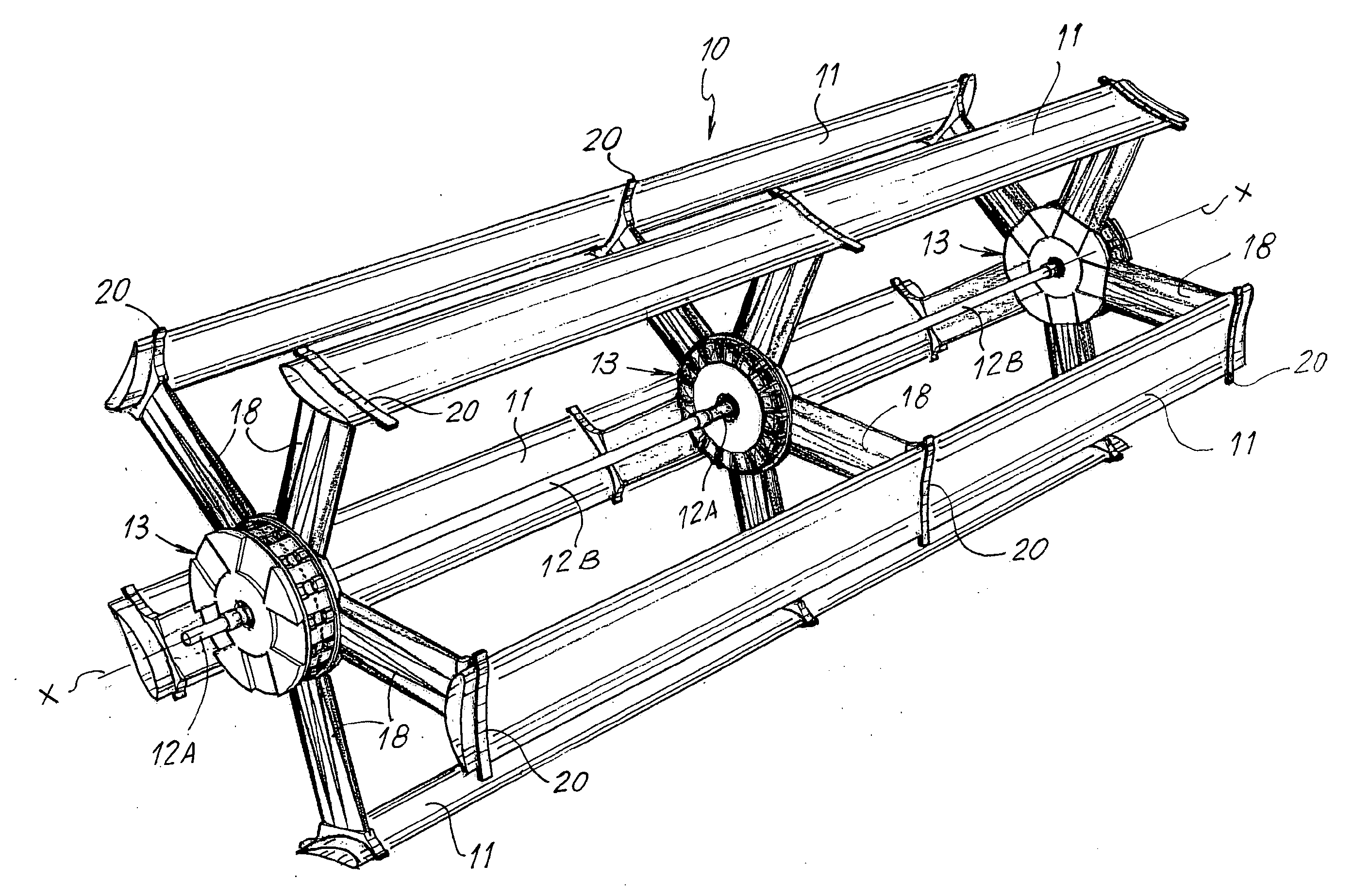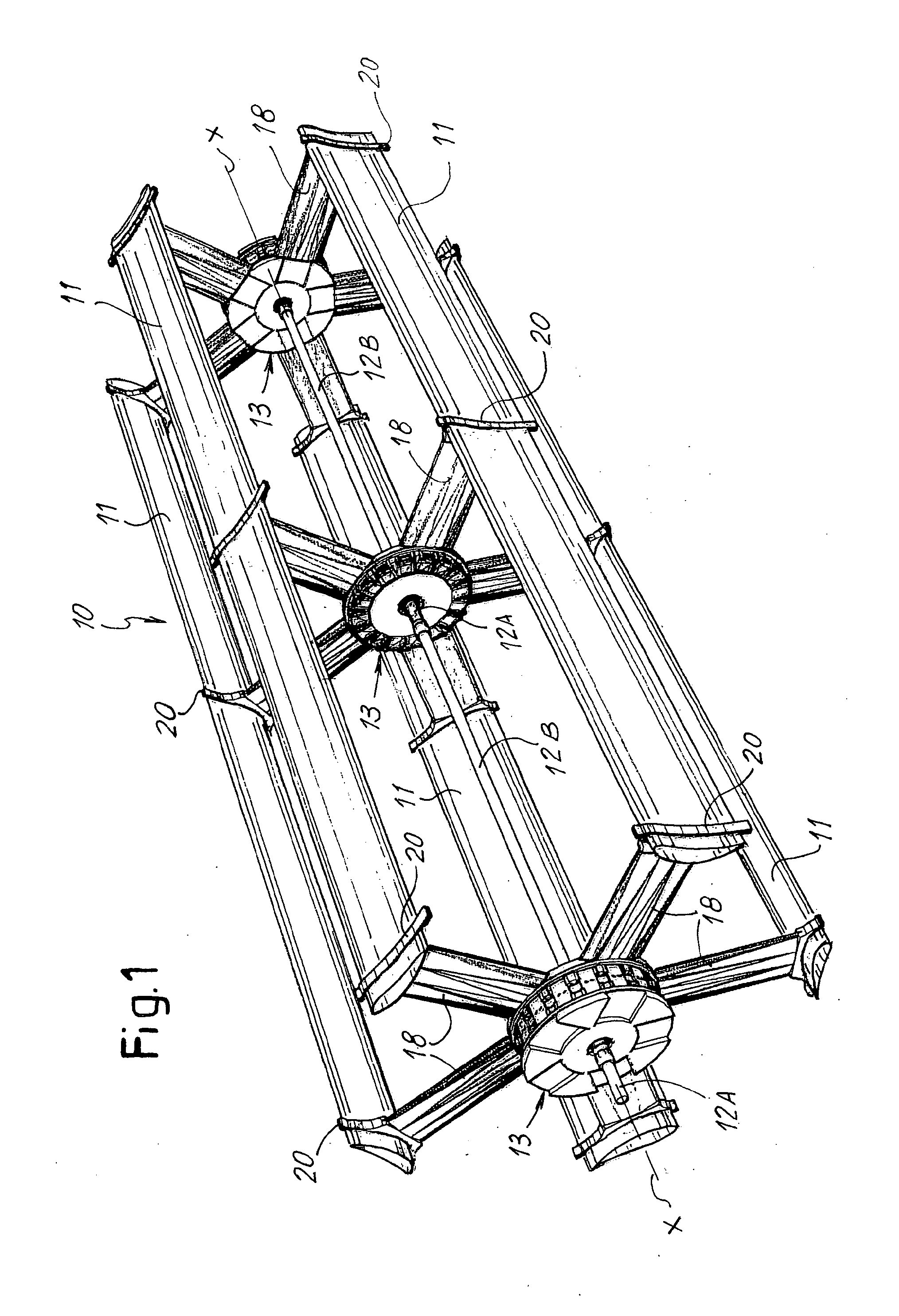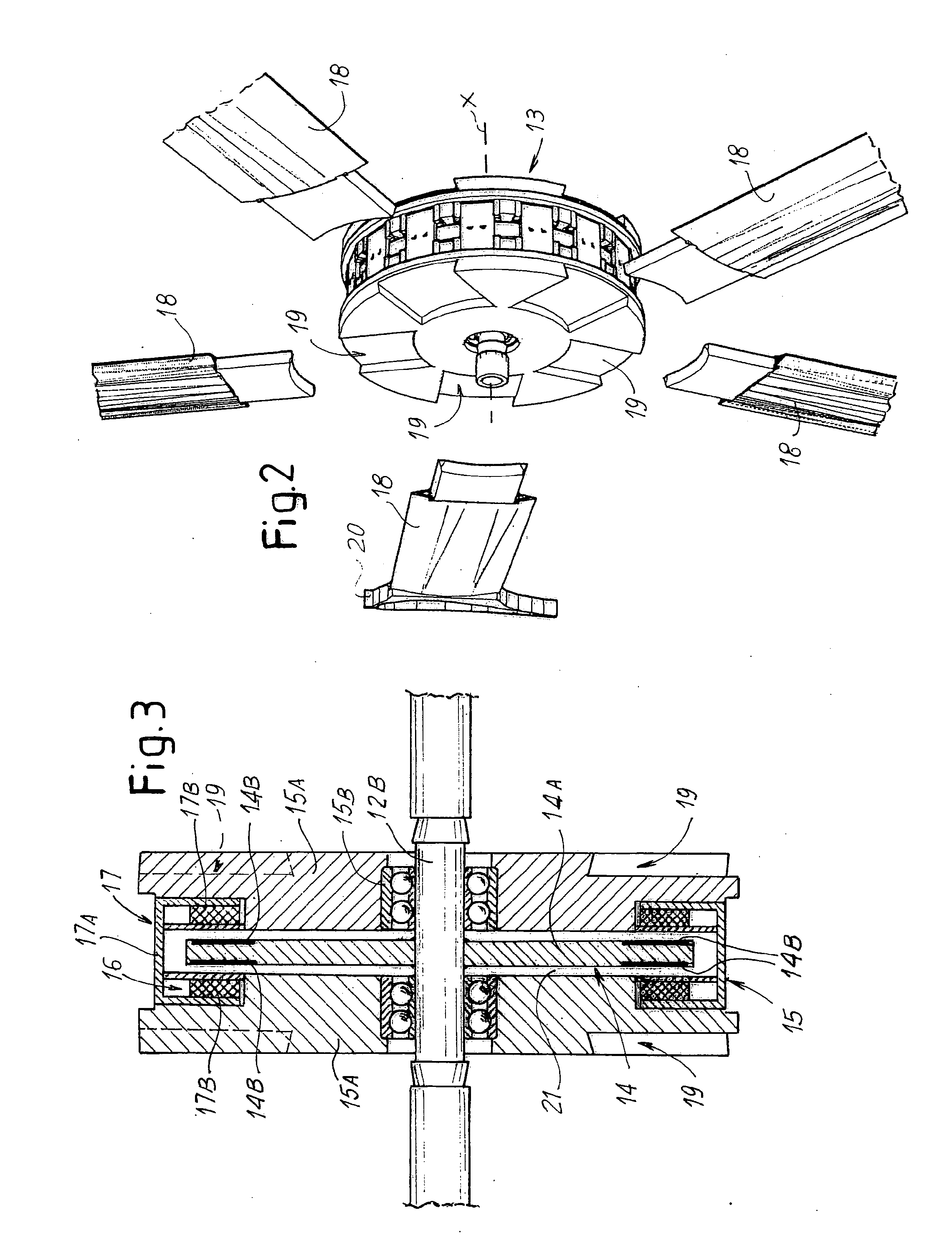Electric alternator for wind power generators
a technology electric alternators, which is applied in the direction of wind power generation, motors, dynamo-electric machines, etc., can solve the problems of mechanical losses, typical failure events, and subject to failure, and achieve the effect of simplifying the structure of wind power generators
- Summary
- Abstract
- Description
- Claims
- Application Information
AI Technical Summary
Benefits of technology
Problems solved by technology
Method used
Image
Examples
Embodiment Construction
[0064]With reference to the aforementioned figures, a wind power generator according to the invention is schematically represented by its blade structure and it is indicated as a whole in FIG. 1 with the number 10. This wind power generator 10 is of the type with blades 11 whose direction of overall development substantially follows the direction of development of the axis of rotation X of the generator. In this example, the blades have rectilinear development with wing profile; clearly, in other embodiments these blades may for example follow the trend of the axis of rotation according to a helical development or yet they may be non continuous because they are constituted by mutually aligned sectors according to a preferred configuration, in any case always overall following the development of the axis of rotation. Obviously, also the shape of the profile may be the one best suited to the requirements.
[0065]The wind power generator 10, in this example, comprises an axial support wh...
PUM
 Login to View More
Login to View More Abstract
Description
Claims
Application Information
 Login to View More
Login to View More - R&D
- Intellectual Property
- Life Sciences
- Materials
- Tech Scout
- Unparalleled Data Quality
- Higher Quality Content
- 60% Fewer Hallucinations
Browse by: Latest US Patents, China's latest patents, Technical Efficacy Thesaurus, Application Domain, Technology Topic, Popular Technical Reports.
© 2025 PatSnap. All rights reserved.Legal|Privacy policy|Modern Slavery Act Transparency Statement|Sitemap|About US| Contact US: help@patsnap.com



